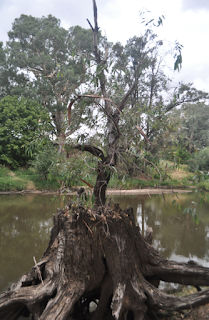I was surprised to discover that commercial soap has had its glycerine removed to be sold separately (as glycerine is seen as a valuable resource). The soap-making process naturally produces glycerine, which is good for our hands. Commercial soap is usually, of course, also full of chemicals.
So, how do we make our own soap? There are 4 main steps, but for detailed instructions, I have provided links to two of the best sources of information that I have found, and these are:
Down to Earth Blog (this will take you directly to her post on soap making)
The Nerdy Farm Wife (this site has a wealth of information on soap making
The Nerdy Farm Wife (this site has a wealth of information on soap making
Please refer to these for ingredients and amounts to use.
Step one: Gather protective gear and make the lye solution
You will need goggles, rubber gloves, a face mask, a plastic container made of strong plastic (rated as 5 for recycling), a stainless steel spoon for stirring, a measuring jug in which to weigh the lye (caustic soda) and measure the water, a thermometer for testing the temperature of the mixture, and a well ventilated space. I go outside on my front verandah. It is recommended that glass and aluminium are not used for this process, although stainless steel is OK.
Weigh the lye and measure the water, pour the water into the plastic container and ADD THE LYE TO THE WATER (never the other way around). Be careful, as it will become very hot and give off fumes.
If you are looking for caustic soda, make sure it is suitable for soap making, not just drain cleaner. It can be found in supermarkets in the laundry aisle, and some hardware stores may stock it.
Step two: Heat up the oils
I use a combination of olive oil and coconut oil and weigh them in a plastic measuring jug before heating them in a glass saucepan to the recommended temperature. I also keep checking the temperature of the lye solution (which I leave outside on the front verandah until it comes down to the desired temperature).
Step three: Add the lye solution to the oil solution
I take the glass saucepan off the stove and place it in the kitchen sink, so that any spills will be contained. Then I pour in the lye mixture and begin to mix it together with a stick blender (alternating between using it for no more than 2 minutes at a time and then mixing with the motor turned off until the blender cools down). Continue this until the mixture reaches trace. Then I added some eucalyptus oil and mixed it in.
Step four: Put the soap into moulds
I use silicon moulds, but a box lined with baking paper or an empty milk carton will also work (the soap can then be cut into bars when set and unmoulded). I find I need to leave the soap in the moulds for a couple of days before releasing it (check that it is not still sticking to the mould).
It will then need to be left to harden for about 6 weeks before using (and this is important, as the soap will just dissolve away if it is not left to properly harden).






No comments:
Post a Comment